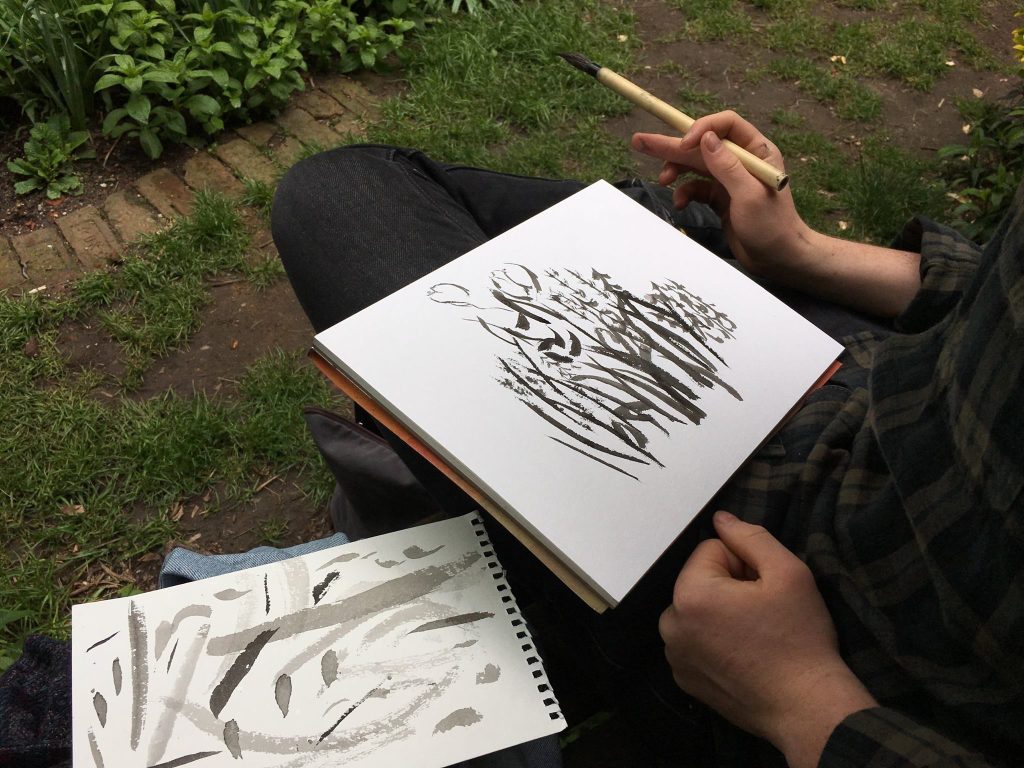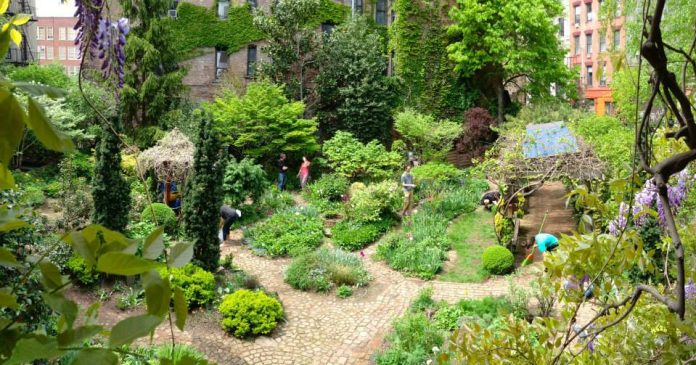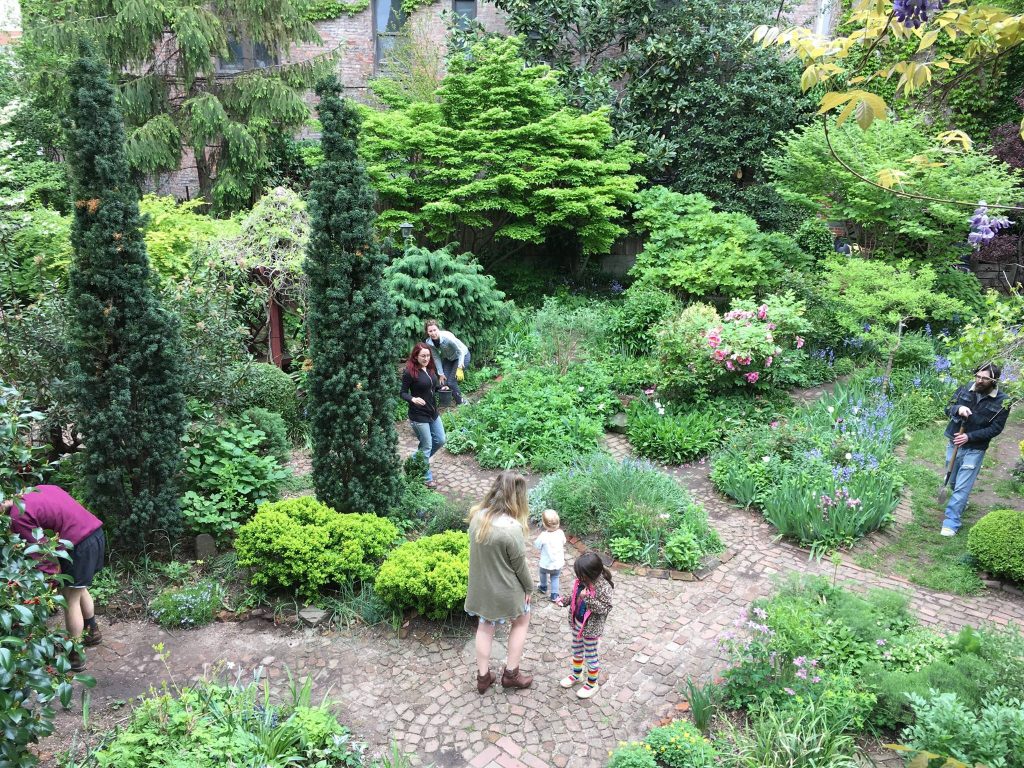New York City is not often associated with peace and quiet. It’s a city that moves fast, runs loud, and never really stops. But even here, amid the clamor of sirens, subways, and endless foot traffic, there are pockets of unexpected calm — and none more charming or surprising than 6BC Botanical Garden in the East Village.
Just steps away from the city’s chaos lies a carefully tended sanctuary: green, shaded, colorful, and completely unlike the Manhattan most people imagine. This community-run botanical garden is a tribute to local passion, urban resilience, and the magic that happens when New Yorkers decide to take nature into their own hands.
Where to Find It — And Why You’ve Probably Walked Right Past It
Tucked between Avenues B and C on East 6th Street, 6BC Botanical Garden is the kind of place that doesn’t advertise itself. There’s no flashy sign or big welcome banner. Instead, a wrought-iron gate and a small plaque mark the entrance. Unless you’re seeking it out, you might stroll by without realizing what you’ve missed — and that’s part of its charm.
Behind the gate lies a verdant, art-filled garden brimming with native plants, aromatic herbs, mosaics, sculptures, and handmade wooden structures. It’s a garden made not by landscape architects or city officials, but by neighbors with vision and persistence.
A Bit of East Village History
The story of 6BC begins in the early 1980s, when the East Village was still gritty, neglected, and full of abandoned lots. The site of the garden was once filled with rubble, trash, and weeds. But a group of residents decided to reclaim the space. Armed with shovels, seeds, and more heart than funding, they cleared the lot and began to plant.
Over the years, through volunteer effort, donations, and sheer love, the garden transformed into what it is today — a thriving urban oasis. The name “6BC” comes from its location: 6th Street, between B and C. It’s a reminder that this garden belongs not to a corporation or institution, but to a neighborhood.
What Awaits Behind the Gate
Entering the garden feels like stepping into another world. Winding stone paths guide visitors past tall wildflowers, shady trees, and flower beds bursting with life. Here’s what you’ll find:
- Shaded benches and quiet corners: Ideal for reading, meditating, or simply taking a moment.
- A vine-covered gazebo: A romantic and picturesque structure often used for gatherings and performances.
- A tranquil pond with trickling water features: A magnet for birds and a soothing soundtrack for visitors.
- Mosaics and sculptures: Artistic touches created by local artists, blending seamlessly with the greenery.
- Herbs and edible plants: From lavender to basil to medicinal species, the garden is also a living classroom.
In late spring and early summer, the garden is at its most glorious. Roses and hydrangeas bloom, lavender adds fragrance to the air, and butterflies flit between plants. You might spot a cat lounging in the sun or a group of kids exploring a nature trail.
Hours and How to Visit
Because 6BC is a volunteer-run space, it doesn’t have fixed, commercial hours. Generally, the garden opens in the afternoons, depending on who’s tending that day. There’s a chalkboard or paper notice posted on the gate with current open hours, and the garden’s Instagram account also posts updates and event info.
There’s no admission fee. Visitors are asked only to respect the space — stay on paths, don’t pick the plants, and leave it as peaceful as they found it.
Pro tip: Bring a notebook or a sketchbook. This is the kind of place where creative inspiration flows naturally.

Events, Art, and Community
6BC Botanical Garden is much more than just a place to look at flowers. It has become a true community hub, hosting a wide range of cultural and educational events throughout the year.
In the warmer months, you might stumble upon:
- Acoustic music nights under the trees
- Poetry readings and spoken word events
- Workshops on composting, native plants, and herbal remedies
- Open-mic nights, craft fairs, and seasonal celebrations
Local musicians and performers love the garden for its intimacy and acoustics. Artists contribute pieces that remain on display among the foliage. Many of the garden’s wooden structures, planters, and decorative elements are hand-built and painted by residents and volunteers.
The events here aren’t just charming — they’re grassroots in the best sense. They remind us what city living can be when people come together to share space with care and creativity.
Why 6BC Belongs on Every NYC Bucket List
New York is famous for its parks — from the grandeur of Central Park to the elevated novelty of the High Line. But the real spirit of New York City is often found in the small, overlooked places — the corners shaped by people who live there, not by tourists or city planners.
6BC Botanical Garden represents that spirit. It’s not flashy. It’s not on a top-ten list. But it’s unforgettable.
It’s where locals come to find stillness. Where kids learn what a butterfly chrysalis looks like. Where someone might bring a guitar and play softly for no one in particular. Where you can feel the seasons change more vividly than anywhere else in Manhattan.
Whether you’ve lived in New York your entire life or are visiting for just a few days, 6BC gives you a reason to pause — and a deeper understanding of what community means in a city this vast.
How to Make the Most of Your Visit
If you’re planning to visit 6BC Botanical Garden, consider the following tips:
- Go on a weekday afternoon if possible, when it’s least crowded.
- Bring water, a snack, or a book, and give yourself at least 30 minutes to unwind.
- Look closely — many of the garden’s best details are small and easily missed.
- Support the space by following their updates, donating if possible, or even volunteering.
Above all, bring your curiosity. The garden is always changing, and no two visits are the same.
In Conclusion
In a city that prides itself on being the biggest, fastest, and loudest, 6BC Botanical Garden is a quiet act of rebellion. It proves that even in the heart of Manhattan, nature can flourish — and not just the nature planted in city-funded parks, but the kind grown by neighbors with muddy hands and wild imaginations.
So next time you’re walking through the East Village, take a detour to 6th Street between B and C. Step through the gate. Breathe. Listen. You’ll be glad you did.

